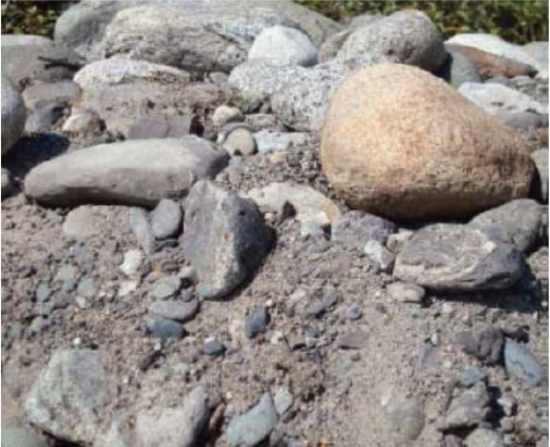An important reason for our limited ability to predict sediment transport, is due to the very wide range of grain sizes leading to size segregation also named grain size sorting, a major scientific issue . This phenomenon largely modifies fluxes and results in patterns that can be seen ubiquitously in nature, such as armoring, patching, or downstream fining.

The primary objective of the ANR SEGSED project is to accurately reflect the occurrence and the consequences of segregation in generalized bed-load transport models. A hierarchy of process-based models at different scales will be developed with the aim to ultimately improve the predictive capability of engineering tools.
The specific objectives of the project are to (i) improve our understanding of size segregation physical processes, especially particle-particle interactions and the feedback with the transporting fluid ; (ii) develop size segregation models for understanding, predicting and upscaling ; (iii) incorporate those segregation models in classical sediment transport models.
At the smallest scale, Rémi Chassagne in his PhD is developing Lagrangian-Eulerian simulation at the grain scale. In DEM, each individual particle is taken into account and intergranular interactions are modelled with simple laws (e.g. Coulomb friction). Gravity and contact forces permit to solve the dynamical behaviour of the system. The movie below shows a typical DEM simulation were the small green particles percolate in the large red particles under bed-load conditions.
These simulations provide an idealized solution to study the relationship between segregation rates, grain size ratios, shear rate and local concentration. An analytical traveling wave solution is derived that allow to reproduce accurately the DEM simulations. The main conclusion of this work (Chassagne et al., JFM under rev.) is that the segregation rate is a power law of the inertial number and the diffusion term is proportional to the segregation flux meaning that the Pellet number, ratio between advective and diffusive fluxes, is constant throughout the depth of the bed.
Hugo Rousseau is developing a continuous multi-phase model to reproduce this phenomenon. The model incorporates 3 phases, a fluid and two granular phases (large ans small grains) and the key issue is to propose consistent closures to describe the particle-particle forces that lead to grain-size segregation. Such an innovative modeling will be a key element of the hierarchy of process-based models that will ultimately allow for upscaling to larger scale models i.e. engineering tools.
Funding :
![]() ANR SegSed (2017-2021) – PI P. Frey - co PI J. Chauchat
ANR SegSed (2017-2021) – PI P. Frey - co PI J. Chauchat
PhD students and Postdocs
![]() Thèse R. Chassagne (2017-)– collab. P. Frey (IRSTEA Grenoble)
Thèse R. Chassagne (2017-)– collab. P. Frey (IRSTEA Grenoble)
![]() Thèse H. Rousseau (2018-) – collab. P. Frey (IRSTEA Grenoble)
Thèse H. Rousseau (2018-) – collab. P. Frey (IRSTEA Grenoble)




